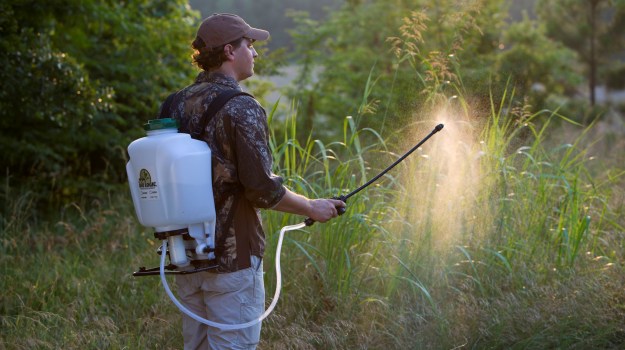
Achieving maximum overall health for a property includes a wide range of issues. When it comes to the health and well-being of soil and plantings, crops must be able to thrive in order to produce the correct, high-protein forage needed by the herds so they can achieve optimum size and health.
Those pesky weeds are a huge part of maintenance, seeing as that they negatively affect the property. There are so many varieties, more than one catalog has been created that not only show pictures for better identification, but also provide the knowledge on how to get rid of that particular weed.
Knowing the names of the species, being able to spot an offender and then learning how to control it are priorities when it comes to keeping the property healthy. There are certain weed species found around the world, while others grow only in certain regions. To I.D. a weed, you must be educated, learning the features of the weed (color, mass, growth), as well as the differences between species of weeds. Accuracy is a must in order to establish a successful weed management program.
The number of grassy weeds is large, and the most difficult to identify because of their similarity to the turf grasses that land managers want. On the downside, taking good care of the desirable turf will also offer a chance for more grassy weeds to invade.
Once I.D. is established, there are very few herbicides that may be used to control existing grassy weeds. The desirable grass needs to remain, so identifying the weeds correctly must be done so appropriate control products can be used.
Broadleaf weeds are the opposite; they are easily identifiable. They look completely different from grasses and certainly stand out, which allows for the use of selective weed control methods that will kill without bringing injury to the grass or crop.
Weeds must be stopped before reaching a mature stage of growth when they will then cause harm to both plantings as well as livestock. Reducing weed growth comes in many forms, with the most basic being the plough, which will devastate the roots of the weed.
A plant is seen as a weed when it has one or more of the following factors: Little or no value; a very high growth rate, and a plant that exhibits competition to crops for space, light, water and nutrients that the crops need in order to survive.
Weeds also reproduce aggressively which allows them to win the battle over productive crops and turn good, solid land into wastelands - unusable scrub. There are also some weeds that are dangerous, poisonous, covered with burrs or thorns and literally contaminate harvests.
Some crops have greater resistance than others, with smaller and slower growing seedlings being the easiest for the weed to overwhelm. As the seedlings’ size increases, their root systems spread out in order to reach the increasing amounts of water and nutrients they need.
Weeds must be carefully removed from separate plots at different times during the growth of a crop, keeping the plots clean. If left too long competition begins between planting versus weed, and the final yield can be reduced quite quickly.
Some of the most prominent weeds found in the U.S. are both annual and perennial. The most common in the perennial family are; dandelion, sowthistle and poison ivy. In the annual category, widespread weeds are; carpetweed, crabgrass, prickly lettuce, and common ragweed.
Just remember that weeds are hearty, and most all will survive mowing because of the fact that the weed needs to be taken out by the root in order to kill the infestation. So check the weed catalog and gain knowledge about the weeds you’re seeing on your land before they take control of it.
The Mossy Oak GameKeepers share the belief that being outdoors is about loving the land, its wildlife, and giving back more than you take. For more articles and information about managing land for wildlife, please visit farmingforwildlife.com.






























